Zhengwei Zhou
MRI Super-Resolution with GAN and 3D Multi-Level DenseNet: Smaller, Faster, and Better
Mar 06, 2020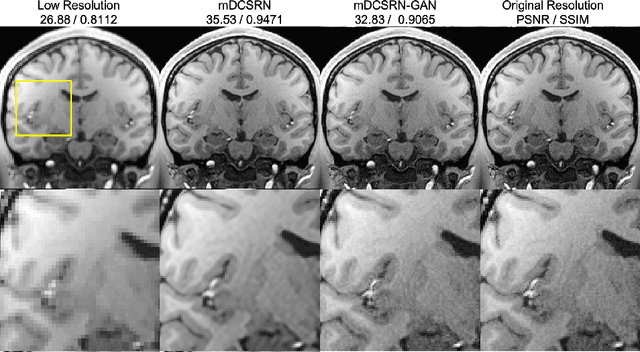
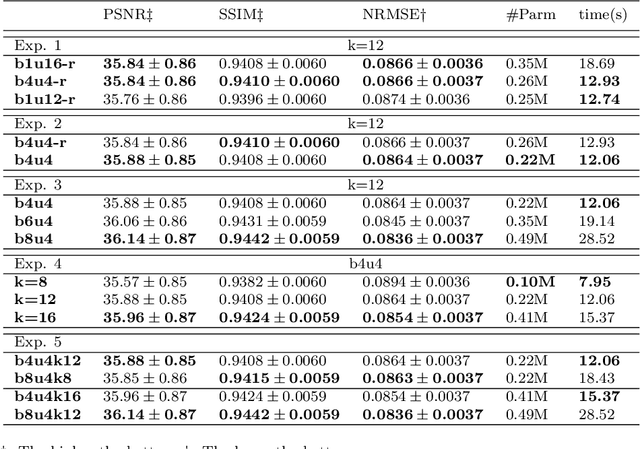
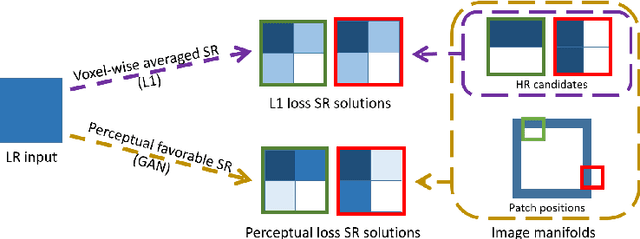
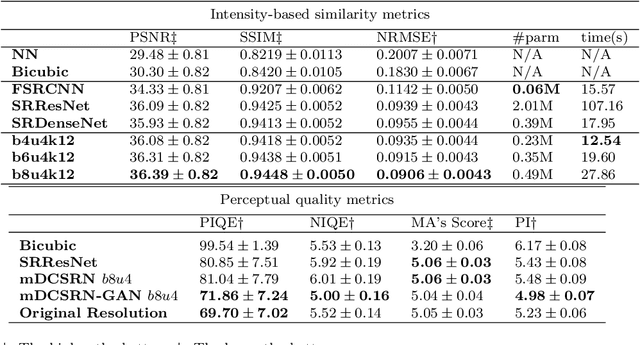
Abstract:High-resolution (HR) magnetic resonance imaging (MRI) provides detailed anatomical information that is critical for diagnosis in the clinical application. However, HR MRI typically comes at the cost of long scan time, small spatial coverage, and low signal-to-noise ratio (SNR). Recent studies showed that with a deep convolutional neural network (CNN), HR generic images could be recovered from low-resolution (LR) inputs via single image super-resolution (SISR) approaches. Additionally, previous works have shown that a deep 3D CNN can generate high-quality SR MRIs by using learned image priors. However, 3D CNN with deep structures, have a large number of parameters and are computationally expensive. In this paper, we propose a novel 3D CNN architecture, namely a multi-level densely connected super-resolution network (mDCSRN), which is light-weight, fast and accurate. We also show that with the generative adversarial network (GAN)-guided training, the mDCSRN-GAN provides appealing sharp SR images with rich texture details that are highly comparable with the referenced HR images. Our results from experiments on a large public dataset with 1,113 subjects showed that this new architecture outperformed other popular deep learning methods in recovering 4x resolution-downgraded images in both quality and speed.
Efficient and Accurate MRI Super-Resolution using a Generative Adversarial Network and 3D Multi-Level Densely Connected Network
Jun 09, 2018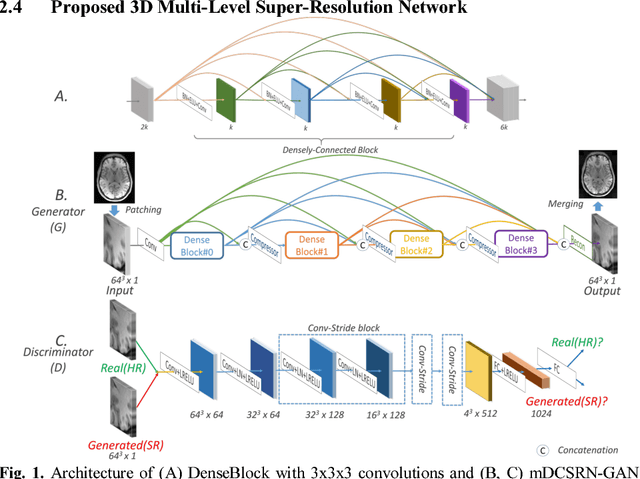
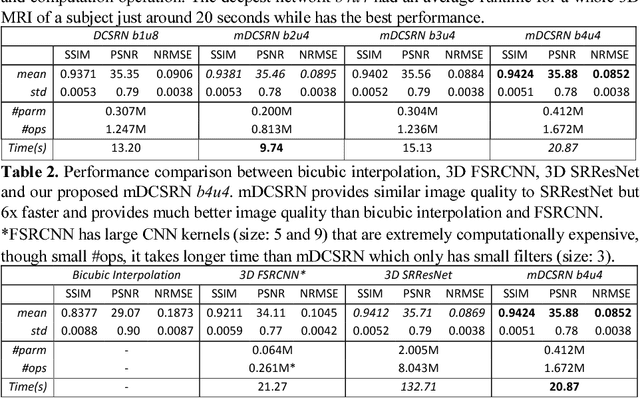
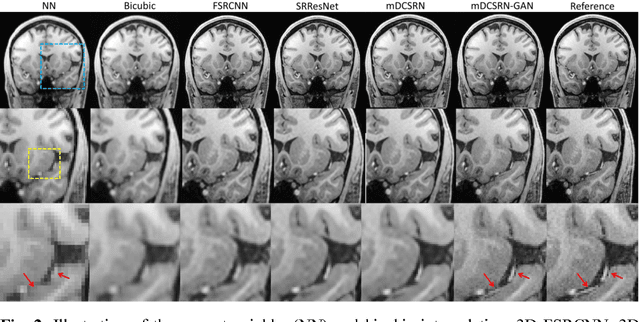
Abstract:High-resolution (HR) magnetic resonance images (MRI) provide detailed anatomical information important for clinical application and quantitative image analysis. However, HR MRI conventionally comes at the cost of longer scan time, smaller spatial coverage, and lower signal-to-noise ratio (SNR). Recent studies have shown that single image super-resolution (SISR), a technique to recover HR details from one single low-resolution (LR) input image, could provide high-quality image details with the help of advanced deep convolutional neural networks (CNN). However, deep neural networks consume memory heavily and run slowly, especially in 3D settings. In this paper, we propose a novel 3D neural network design, namely a multi-level densely connected super-resolution network (mDCSRN) with generative adversarial network (GAN)-guided training. The mDCSRN quickly trains and inferences and the GAN promotes realistic output hardly distinguishable from original HR images. Our results from experiments on a dataset with 1,113 subjects show that our new architecture beats other popular deep learning methods in recovering 4x resolution-downgraded im-ages and runs 6x faster.
Brain MRI Super Resolution Using 3D Deep Densely Connected Neural Networks
Jan 08, 2018

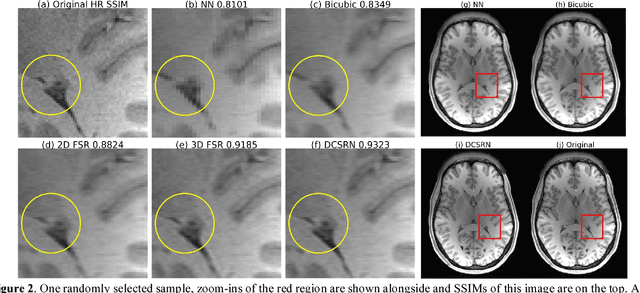

Abstract:Magnetic resonance image (MRI) in high spatial resolution provides detailed anatomical information and is often necessary for accurate quantitative analysis. However, high spatial resolution typically comes at the expense of longer scan time, less spatial coverage, and lower signal to noise ratio (SNR). Single Image Super-Resolution (SISR), a technique aimed to restore high-resolution (HR) details from one single low-resolution (LR) input image, has been improved dramatically by recent breakthroughs in deep learning. In this paper, we introduce a new neural network architecture, 3D Densely Connected Super-Resolution Networks (DCSRN) to restore HR features of structural brain MR images. Through experiments on a dataset with 1,113 subjects, we demonstrate that our network outperforms bicubic interpolation as well as other deep learning methods in restoring 4x resolution-reduced images.
 Add to Chrome
Add to Chrome Add to Firefox
Add to Firefox Add to Edge
Add to Edge